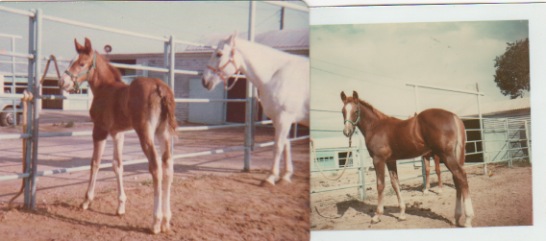well…our young filly (will be 2 in July) is finally (!!) 7 miles down the road.
I have a lot of work to do. I will now be able to take many opportunities to handle, get to know, observe, and slowly work with her.
In teaching one to tie…I know everyone’s approach is different…but I’m not one to ‘want the baling twine’ to easily break…because I fear the ‘lesson’ learned. I also do NOT want to injure her in anyway. so, I guess I want a ‘tie’ spot that will restrict going up and over, but also have some give without breaking and freeing each time of resistance?
I know I’m certainly ‘asking for it’ in asking everyone’s different approaches and opinions.  but I promise I’ll read and listen to each.
but I promise I’ll read and listen to each.
I do know this: I am going to spend my time getting to know her FIRST…getting her respect, and she gaining mine as well…on things I do NOT fear may go badly…just for awhile. Hourly visits of handling, grooming, leading, talking to her…etc, etc…until I feel I know her well and can ‘know’ when she’s fried, or time to close the lesson, and end on a good note…etc.
thanks guys!


 I appreciate the time you took to really outline your approach. Yes, I think I’m in a weird phase of…‘if I had been with her younger’ I would have done a lot of this different. Now, she’s getting big, and doesn’t have this skill set, and is also? now in a new place with new horses and new ‘handlers’…so, its a bit of backing up…but with a much bigger/stronger girl!
I appreciate the time you took to really outline your approach. Yes, I think I’m in a weird phase of…‘if I had been with her younger’ I would have done a lot of this different. Now, she’s getting big, and doesn’t have this skill set, and is also? now in a new place with new horses and new ‘handlers’…so, its a bit of backing up…but with a much bigger/stronger girl! Teahign the give first is a lot less stressful and painful for everyone involved.
Teahign the give first is a lot less stressful and painful for everyone involved.